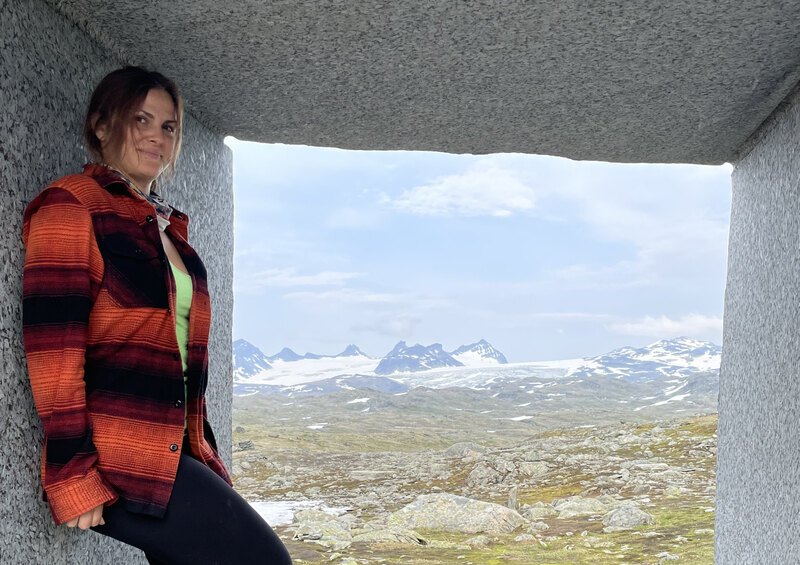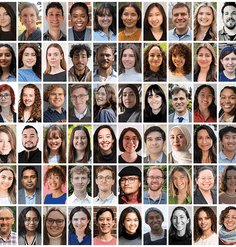LAF Fellow Kathryn Finnigan is Founding the NeuroScapes Design Collective

It’s estimated that 15–20% of the global population falls under the umbrella of neurodiversity identity. Diagnoses, along with individual manifestations, are unique, but a common thread is the experience of sensory sensitivities—both hypersensitivity (increased stimulation) and hyposensitivity (reduced stimulation). Differences in sensory processing frequently affect neurodivergent individuals’ experience of designed outdoor and public spaces, among other environments.
When Kathryn Finnigan was in graduate school, she searched for resources and guidelines on designing outdoor spaces for neurodivergent needs and found little to nothing on the subject. She started grad school intending to work on climate change. However, having lived experience with neurodiversity, this information gap was surprising, and it set her on the path that would lead to her LAF Fellowship project: the NeuroScapes Design Collective.
Through the Collective, Kathryn and her three co-founders, Maci Nelson, Mark Simonin, and Benjamin Jensen, aim to advance discourse on intersections between landscape design, urban design, and sensory sensitivities and neurodiversity. They dedicated the Collective to Kathryn’s late brother, Matthew Finnigan, who also went by his chosen name of Starblade. Matthew was autistic, queer, and twice-exceptional—a term used to describe individuals who are both exceptional and have an invisible disability. He hoped to study trends related to biological, environmental, and personal factors that could address challenges related to autism. His vision inspired Kathryn throughout her busy fellowship year that also included finishing her qualitative study on sensory sensitivities in outdoor built environments, graduate degree, advising on a Metro Regional Government Committee by providing insights on invisible and sensory disabilities, and launching her landscape architecture career at a design-build firm focused on therapeutic and restorative design.
In 2022, Kathryn was selected as the LAF National Olmsted Scholar, and thanks to the accompanying award, was able to elevate her research to new heights. Building on this proposal, she applied to the LAF Fellowship later that year, while her study was still underway. Originally, her fellowship proposal had included a very concrete deliverable: a neuro-inclusive design toolkit tested through design prototypes. However, as she started to interpret her findings, a bigger picture started to unfold, and she started to deviate from a more prescriptive approach. Now, when asked what is missing in the landscape architecture space for neurodivergent communities, she answers, “More conversations.” There is still more research and more dialogue that needs to happen.
Landscape architecture and urban design need to learn how to effectively accommodate diverse sensory needs. A one-space-fits-all solution is unlikely; the same design choices that provide comfort for those with hypersensitivities may be the opposite of what a person with hyposensitivity needs; different sensory zones might need to be created, for example, to give options to a wider variety of users. That doesn’t mean creating acoustically and sensorially supportive outdoor environments is impossible or even unfeasible, but because with the wide breadth of neurological diversity and because it is an emergent field with very little pursued to develop best practices, a promising first step is to start a wider conversation in the field.
The good news for those who want to better understand neurodiversity and design is that this community is excited to speak, to share, and to listen. That has been a recurring theme in Kathryn’s work so far. There is no shortage of neurodivergent individuals who can share their experiences and inform design that improves their lives.
That brings us back to the final iteration of Kathryn’s fellowship project, the NeuroScapes Design Collective, which aims to be a “Place to Land and Expand.” Kathryn keeps coming back to a metaphor—inspired by her brother’s chosen name—to describe her vision of the project: “Our story is akin to that of a seed emerging into a blade reaching for the stars. The collective is akin to a plant stem with many roots—allowing a central place to land, and then in turn empowering the community to expand out on their own.”
The Collective’s vision is “to redefine the future of design, creating sensory responsive environments that reflect and celebrate the neurological diversity of our communities.” This grassroots initiative aims to advance dialogue on the intersections of landscape and urban design with neurodiversity and sensory sensitivities by creating content, fostering awareness, and building community.
The four co-founders each bring different areas of interest and expertise, and each has committed to producing some sort of content each quarter with the aim of fostering awareness and building community. Mark Simmons is focused on accessibility, policy, and self-audits. Benjamin Jensen is interested in the sensory aspects of plant life. Kathryn is focused on non-living and ambient materials, along with natural patterns. Maci Nelson plans to develop reading reflections for the Collective to respond to.
When it comes to building community, they’ll start simple with a LinkedIn group where anyone interested in designing for neurodivergence can come learn, contribute, and discuss. There’s a lot of work to be done to bridge this gap in knowledge for the field, which is why the Collective is taking it one step at a time, focusing on quality over quantity, and developing a nourishing environment so this seed can grow and thrive for years to come.
To those reading this who want to start changing their practice and considering the needs of the neurodiverse community in their design, Kathryn has these calls to action: join the conversation, educate yourself, and start bringing that informed awareness into your practice. As quoted from her article in Land, she also encourages landscape architects “to embrace a forward-thinking outlook and remain patient in the pursuit of understanding, acceptance, and inclusion, recognizing that impactful change often unfolds through a series of small steps.”
Members of the 2023-2024 cohort of the LAF Fellowship for Innovation and Leadership have been exploring their big ideas and advancing their proposed projects. The Fellows will present the culmination of their work at LAF’s Innovation + Leadership Symposium on June 6, 2024, in Washington, DC. In the meantime, LAF is profiling each Fellow to share more about their progress and personal journeys.










